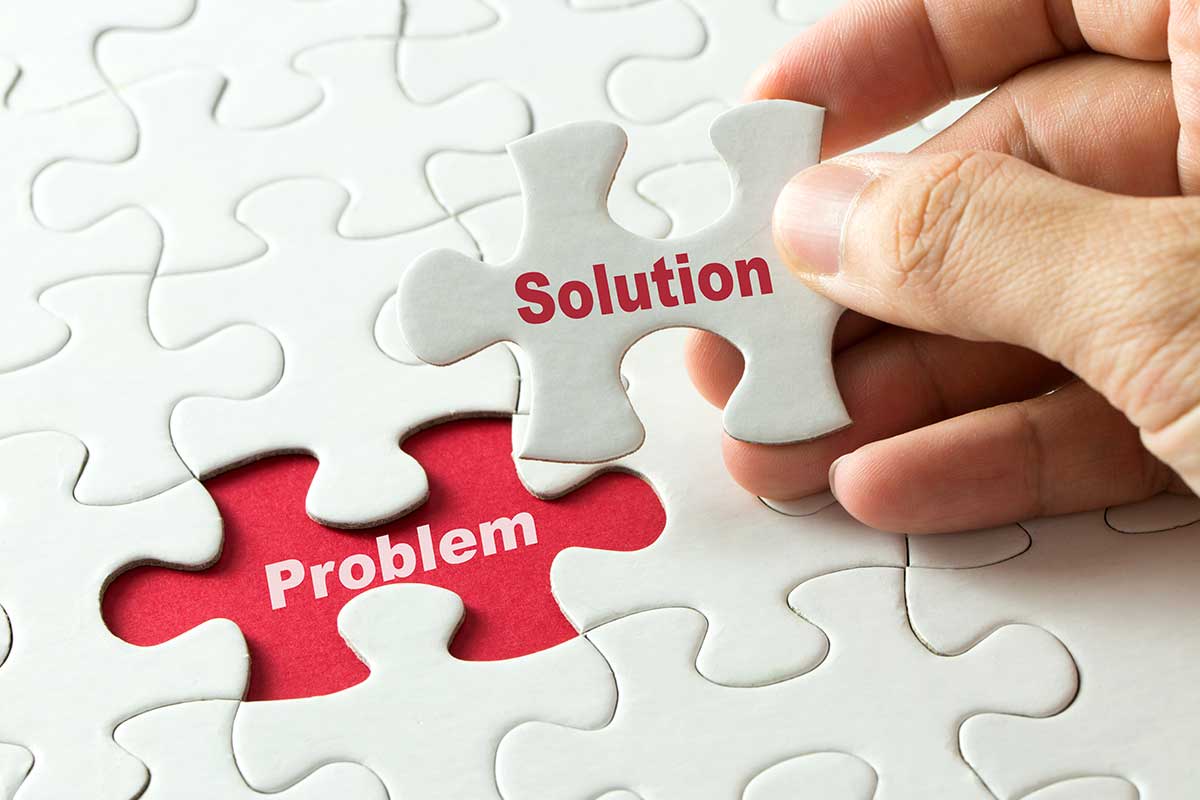
AC-010522-Problem-Solving-Tarani_1200
One thing you can be assured of living in today’s dynamic society is the need to solve problems. Your two choices are to allow a problem to persist or to solve it straight up. If you choose to solve the problem so that it doesn’t recur, then there’s a useful tool you can keep in your kit to help you better control of the situation.
Problems at home or at work may not necessarily be negative situations in that the solution may bring clarity or greater understanding of a bigger picture. Appropriately addressing a problem may additionally afford you an impromptu learning opportunity.
Problem solving can be viewed as a process like any other. It includes a start point, a work through phase and an end point or resulting in a solution.
DEFINE
The start point of the problem-solving process is to clearly define the problem itself. Defining a problem may not always be quite as simple as it seems. You want to discover everything you can about the problem to provide the best possible understanding. Differentiate fact from opinion. Avoid trying to solve the problem without enough data. Collecting relevant and useful information is what allows better processing for optimal outcome.
Start with the basics. What exactly is the problem? Have you identified what standard or expectation is violated? Were there any unforeseen consequences?
Layers of complexity can make a problem seem insurmountable. Is it more than one problem, multi-part or complex? If so, then break it down to its smallest component parts. Sometimes even just this basic analysis can render an overall problem into readily solvable smaller ones.
Identify each part of a multi-part (larger) problem and then set your priorities. Which sub-component needs to be solved first? Which ones can wait? Which ones are not even part of the overall problem or maybe stem from somewhere or something else?
ORGANIZE
Once you’ve clearly defined the problem and have broken it down into its smallest digestible parts, then you are ready for the next step in the problem-solving process—organizing the information you have gleaned.
Are there any additional resources or further data you can find to add any additional clarity? If not, then it’s time to analyze everything you know.
The first step in any analysis is to organize your information. Put all the blue Legos® with the blue Legos® and the red Legos® with the red Legos®. Doing this helps to clearly identify supporting information leading to why the problem occurred in the first place. It can also lead to a deeper understanding of the overall situation by helping you determine if the problem will persist or recur. Is this a one-time problem? Is this a self-correcting problem? If not, what would cause it to occur again?
Armed with your newly organized data, get to the bottom of the story. Identify possible and probable root causes of the problem. Prioritize these potential causes in order of “most likely to have occurred.”
EVALUATE
The next step in the process calls for unclouded judgment and is best run when you are “outside” the equation. Do your very best to remove yourself mentally from the situation. Looking at it objectively eliminates any attachment or bias you may have to a specific outcome. Remember the objective is to solve the problem and not justify a personal agenda.
What might be a list of actions needed to address the root cause of the problem? You can broaden your perspective and come up with better options if you approach it objectively. Take the individual Legos® and brainstorm with others. You may be able to come up with better options if you’re open to outside ideas.
Consider the bigger picture when you’re evaluating your options. Look at such factors as how your solution will impact others and the situation wholistically. Consider short and long-term alternatives. Will this specific option withstand any setbacks or failures? What tweaks or changes may be needed to ensure that the problem is solved and will not recur?
IMPLEMENT
Once you’ve decided an optimum solution, then identify opportunities to implement your solution. Implementation is intended to solve the problem, ensure that it will not recur and communicate any lessons learned.
Implementation is not the end of the problem-solving process. The process requires continued monitoring of possible relapses or recurrences. It is always possible that a solution may not work out as expected when implemented. Make changes as quickly as possible especially if you see something you didn’t catch earlier.
You can stay on top of any problem by monitoring the situation. Is it better than before? The same? Worse? What feedback are you getting from others?
The magic to problem solving is patience. Adopting an analytical and impartial approach allows for multiple perspectives which create multiple options. Problems can be either expected or unexpected and the best rule of thumb is to expect the unexpected. However, should a problem arise, you now have a readily deployable process to identify, define, organize, evaluate and implement an optimal solution.














